WDI CEF: small increase in distribution (NYSE: WDI)
Lemon_tm
Written by Nick Ackerman, co-produced by Stanford Chemist. This article was originally published to members of the CEF/ETF Income Laboratory on July 15, 2022.
Western Asset Diversified Income Fund (NYSE: WDI) gets the award for being one of the least opportune funds to launch when he did. It was launched in June 2021, so we just celebrated its first anniversary. Although investors who invested in it around its launch are probably not celebrating but cursing the fund. For what it’s worth, some funds launched in 2007, which would have had an even worse trajectory.
Since then, the price and the net asset value have only moved in one direction: down. Shortly after its launch, the Fed began announcing that it would raise rates earlier than expected. Then subsequently began to increase rates at a faster rate. The topic of bad timing for launch is something we discussed in our previous coverage.
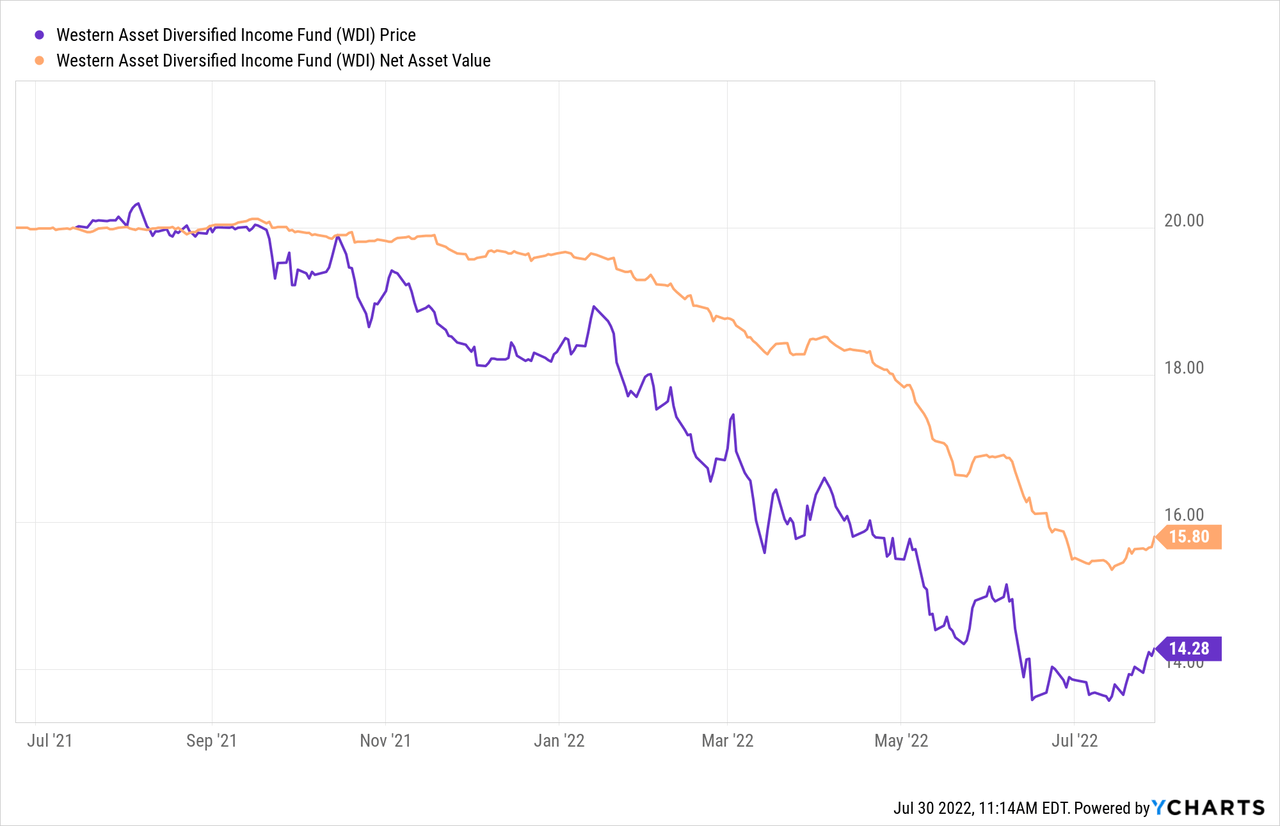
However, the fund slightly increased its monthly distribution. That’s why I think it’s worth revisiting this fund today. This is a great reminder that the price of the underlying bonds and the portfolio does not correspond to the amount of income generated. This was an additional reminder from WDI, as PIMCO Dynamic Income Opportunities Fund (PDO) was also raised recently.
All other things being equal, income continues to come in and if invested opportunistically can result in even higher income. The fund is leveraged, so it’s worth pointing out that some of these benefits are lost due to the higher leverage costs.
We can also see that the actual stock price has fallen much faster than the net asset value, which has resulted in the fund’s steep discount.” In fact, at the time of writing, it has fallen slightly further. The larger discount should mean that the expansion of the discount could be limited Moreover, the increase in the distribution signals at least some confidence on the part of managers.
The basics
- Z-score over 1 year: -0.42
- Discount: 9.62%
- Distribution yield: 10.16%
- Expense ratio: 1.48%
- Leverage: 31.76%
- Assets under management: $1.2 billion
- Structure: Temporary (early liquidation date June 24, 2033)
WDI’s objective is “to obtain a high current income. As a secondary investment objective, the fund will seek capital appreciation. They will bring a “flexible and dynamic” approach. They plan to do this by “rotating sectors and stocks in response to market conditions, focusing on what we believe are undervalued stocks with attractive fundamentals.
For greater flexibility, they have no restrictions on investing in above or below investment grade securities. This means that they will cover the full spectrum of credit quality, leading to a truly multi-sector bond fund with limited constraints. It can be positive if they can handle it successfully. This leaves investors a little more in the dark and more dependent on the management team to manage the fund.
The fund’s leverage has increased, but much of this appears to be due to the decline in the portfolio’s underlying value. Although the borrowings may remain the same, the declines mean leverage takes up a higher percentage of assets under management. They pay at a higher spread than LIBOR, but will look to switch to SOFR as LIBOR is discontinued.
To help offset some of the interest rate sensitivity, the fund participates in forward contracts and interest rate swaps. Including leverage fees, the expense ratio is 1.82%.
WDI Expenses and Fees (Active West)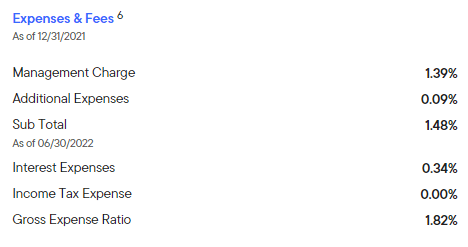
Performance – The discount remains significant
Another highlight from my previous article was that the fund was heavily discounted. That remains the case today, and further losses on the fund probably don’t help the fact. Of course, the fund is not the only one to generate losses. It fell by a similar amount to the S&P 500.
WDI performance (Looking for Alpha)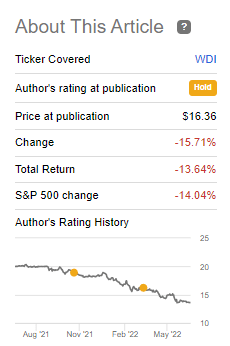
A stock index isn’t a great benchmark, but gives us some insight into how bad investments are doing across the board. Below is a YTD performance of total net asset value and total price returns relative to PDO. I have also included the Vanguard Total Bond Fund (BND).
Y-Charts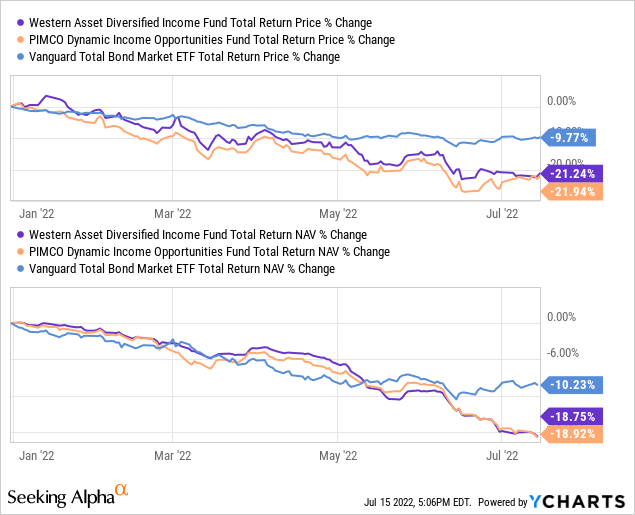
For the most part, WDI and PDO showed similar results. Even BND was no place to hide, which invests in almost all investment grade bonds and US government issues. It’s only more recently that he’s started to show some defensiveness.
All that said, the deep discount remains in place. It has increased a bit from what it was before, but not materially. This seems like a comfortable level that investors allow the fund to reach. For a few brief periods, it dipped lower. That being said, further expansion of discounts for any significant period would seem limited beyond this level, given the trend.
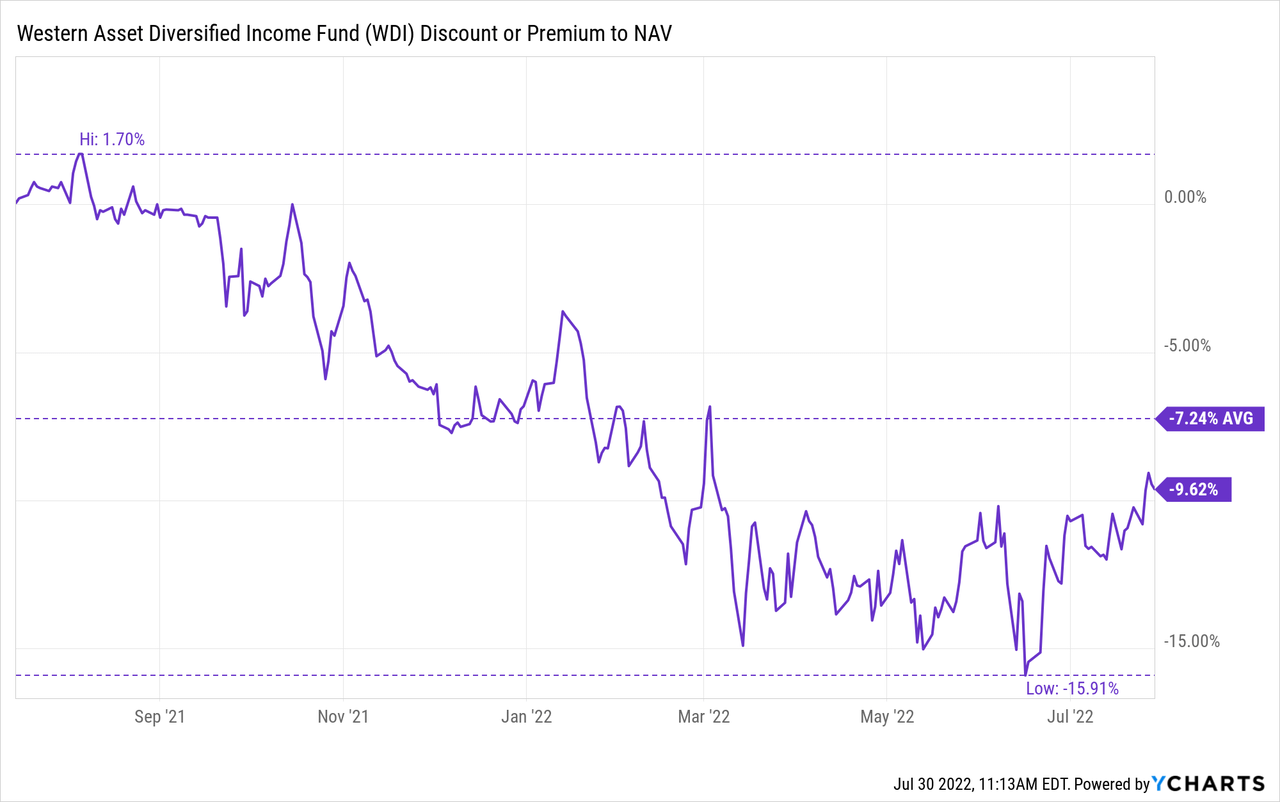
Distribution – Small Bump
I keep repeating the “small” part of the increase. It just went from $0.117 per month to $0.12. Any increase at this time is encouraging. This helps give managers confidence that revenue should continue to flow. The fund’s distribution yield rose to double digits at 10.16%, with a NAV yield of 9.20%.
WDI distribution history (CEF Connect)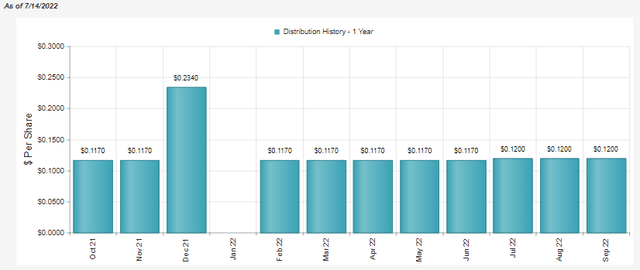
The fund does not provide monthly UNII reports as far as I could find. That being said, they provide quarterly updates. Looking at that, it’s worth noting that they were still recording $370 million in borrowings at the end of March 31, 2022. So an increase could have been between now and the end of June.
If they increased their leverage, that might explain why they felt more comfortable increasing the payout. In their last annual report, they indicated that they could borrow up to $400 million.
Also, from this period, we see only a slight change in the fund’s total net investment income. It wasn’t even enough to change the NII figure per share. A slight decrease or increase from quarter to quarter is not unsuspected and may depend on the timing of payments. That’s why six months or a year is even better. In this case, it gets rid of this variability from quarter to quarter.
WDI Q1 NII (Active West)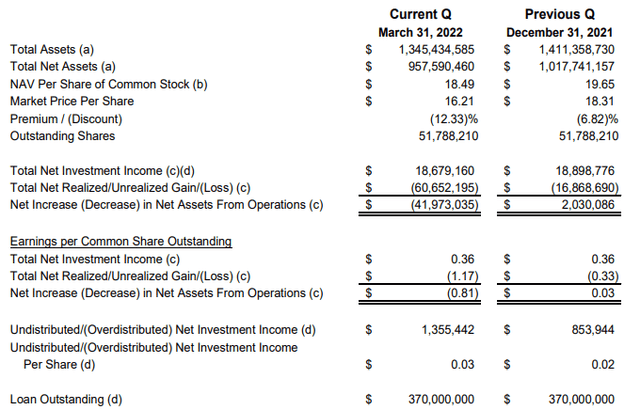
UNII increased during the quarter, but both realized and unrealized losses were significant. This is exactly what we see happening in the fund’s net asset value, with the underlying holdings losing value.
For tax purposes, all distributions paid in 2021 were ordinary income. As a fixed income fund, this generally means it is more appropriate to hold it in a tax-sheltered account.
WDI tax character (Active West)
WDI Portfolio
As mentioned above, WDI has implemented hedges against higher rates. One of them comes from the sale of futures contracts.
WDI Futures Contracts (Active West)
Most of these contracts have expired now, but they help give an investor an idea of how they might be positioned.
We also have interest rate swaps.
WDI Interest Rate Swaps (Active West)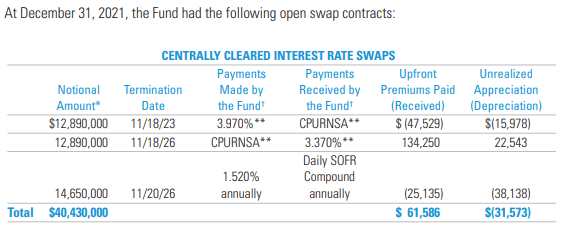
These are the types of portfolio positioning that I wouldn’t necessarily do in my own portfolio. This is why having this type of exposure through WDI or PIMCO funds can be beneficial.
To better protect against interest rate sensitivity, this is where the flexibility of the fund can come into play.
WDI sector exposure (Active West)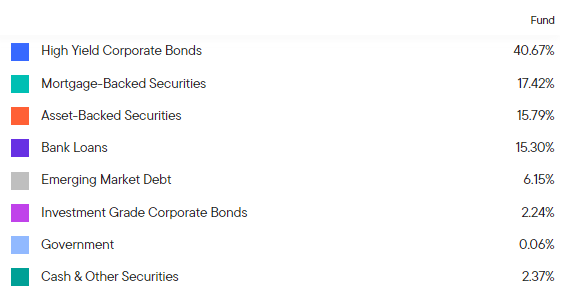
They are mainly invested in high yield corporate bonds. These often have shorter maturities compared to higher quality bonds. However, the fund has some exposure to it. In addition, the fund’s exposure to bank loans would also be an offsetting factor for interest rate sensitivity. Bank loans are generally floating rate securities.
The effective duration of the fund is 3.23 years, with an average maturity of 7.04 years. The fund’s weighted average coupon is 6.64%. Adding leverage on top of that pushes us to be able to hedge more of that 9.38% NAV rate.
However, going with a higher allocation to high yield bonds means the portfolio is quite risky. Credit risks are a real concern, with a potential economic slowdown as the Fed continues to raise rates. So why we saw a lot more declines in the underlying portfolio than I think we would otherwise. That is, beyond what we would do on interest rate changes alone.
WDI Credit Quality (Active West)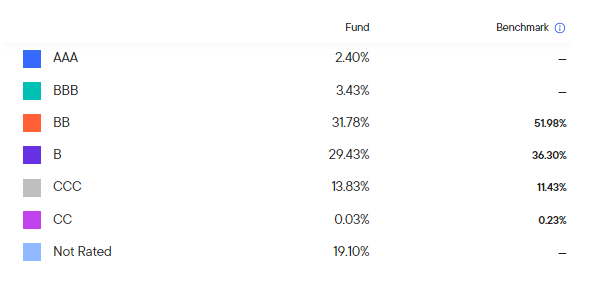
One way to counter this risk is to invest in hundreds of positions. WDI does exactly that with 298 holdings. They also invest in various sectors, which further adds to the diversification. Consumer cyclicals and energy are the largest groups, which would arguably be riskier and more unpredictable holdings.
WDI Sector Weights (Active West)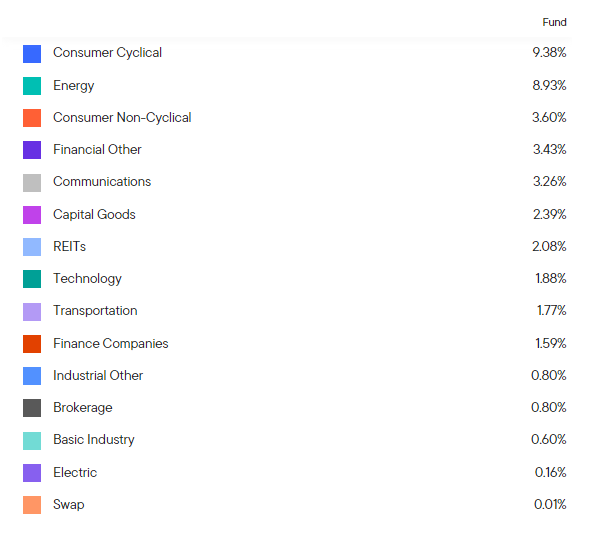
Conclusion
WDI has recently increased its distribution. It’s not the only multi-sector bond fund to do so recently, as PDO has increased its payouts. In this case, their coverage was significant and represented a larger increase. Despite this, it is another reminder that bond prices do not change the income generated. At least not for fixed rate investments, of course. There have been substantial declines in the prices of the underlying bonds, which is why the portfolio has shrunk significantly. Revenues, on the other hand, barely budged. If they are opportunistic in their investment approach, this could lead to better income generation down the road.


Comments are closed.